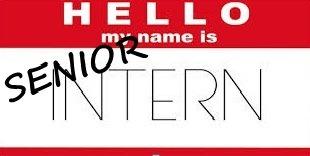Pros and Cons of Digital vs. Traditional College Textbooks
Dec 29,2023
As technology continues to shape the landscape of education, the debate over using digital college textbooks versus traditional printed ones remains ongoing. Each format offers distinct advantages and drawbacks. This article aims to explore the pros and cons of both digital and traditional textbooks to help students make informed decisions about their preferred learning materials.
Pros of Digital College Textbooks:
-
Accessibility: Digital textbooks provide instant access to an extensive library of resources, allowing students to download materials at any time. This accessibility is particularly beneficial for students who need immediate access to course materials.
-
Portability: Carrying multiple digital textbooks on a laptop or tablet is far more convenient than lugging around a stack of heavy print books. This portability is advantageous for students who prefer studying on the go or in various locations.
-
Search Functionality: Digital textbooks often come equipped with robust search features, enabling students to quickly locate specific information within the text. This feature can save time and enhance efficiency during study sessions.
-
Interactive Features: Many digital textbooks incorporate interactive elements such as multimedia, hyperlinks, and quizzes. These features contribute to a more engaging learning experience, catering to various learning styles.
-
Environmentally Friendly: Opting for digital textbooks can be a more eco-friendly choice, as it reduces the need for paper production and minimizes the environmental impact associated with traditional printing methods.
Cons of Digital College Textbooks:
-
Eye Strain and Screen Time: Prolonged use of digital devices can lead to eye strain and discomfort. Students who spend significant time reading on screens may experience fatigue, potentially impacting their overall well-being.
-
Device Dependency: Relying on digital textbooks requires access to electronic devices. In cases where students don't have reliable access to technology or face technical issues, dependence on digital materials can become a hindrance.
-
Distractions: Digital devices may introduce distractions such as social media, emails, or other apps that can divert students' attention away from studying. Maintaining focus can be challenging when using devices with multiple functionalities.
-
Limited Resale Value: Digital textbooks typically cannot be resold or shared, limiting opportunities for students to recoup some of their expenses or assist peers with course materials.
Pros of Traditional College Textbooks:
-
Tactile Learning Experience: Many students appreciate the tactile experience of reading a physical book. Turning pages and interacting with printed materials can contribute to a sensory-rich learning experience.
-
Reduced Eye Strain: Print books are known to cause less eye strain than digital screens. Students who are sensitive to extended screen time may find relief in using traditional textbooks.
-
No Device Dependency: Traditional textbooks do not rely on electronic devices, making them accessible to students regardless of technological resources or device availability.
-
Resale and Sharing: Students can sell or share traditional textbooks, providing an opportunity to recoup some of the initial costs or assist fellow students who may need the materials.
Cons of Traditional College Textbooks:
-
Weight and Bulk: Carrying multiple printed textbooks can be cumbersome and heavy. This can be a drawback for students who prefer a lighter and more portable option.
-
Limited Search Functionality: Traditional textbooks lack the search functionality of digital versions. Finding specific information can be more time-consuming, especially in larger texts.
-
Environmental Impact: The production and disposal of paper contribute to environmental concerns. Choosing traditional textbooks may have a higher ecological footprint compared to digital alternatives.
The decision between digital and traditional college textbooks ultimately depends on individual preferences, learning styles, and practical considerations. Students may find a hybrid approach beneficial, incorporating both formats based on the specific requirements of each course. By weighing the pros and cons, students can make informed choices that align with their academic needs and preferences.





